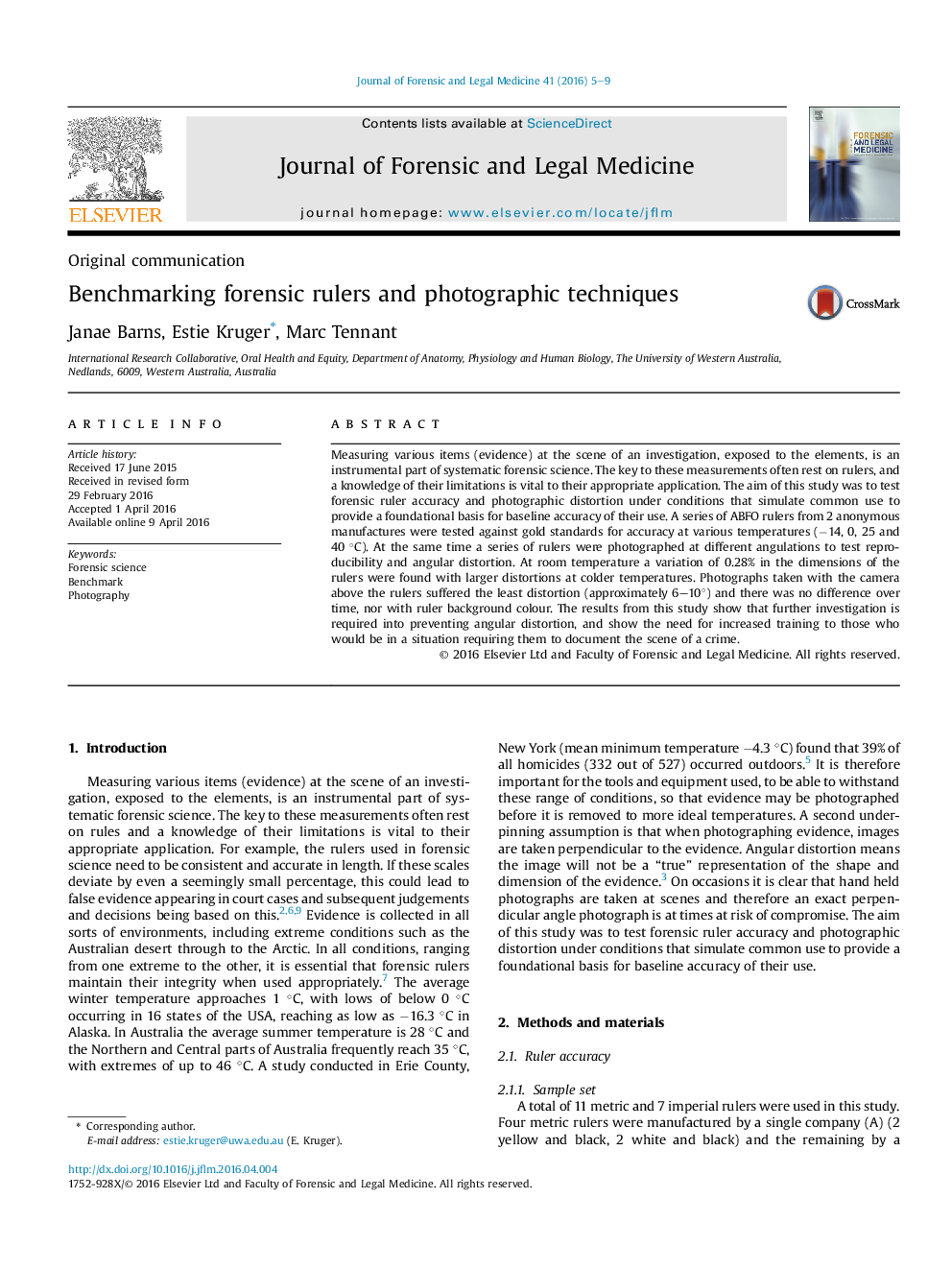| Article ID | Journal | Published Year | Pages | File Type |
|---|---|---|---|---|
| 6555136 | Journal of Forensic and Legal Medicine | 2016 | 5 Pages |
Abstract
Measuring various items (evidence) at the scene of an investigation, exposed to the elements, is an instrumental part of systematic forensic science. The key to these measurements often rest on rulers, and a knowledge of their limitations is vital to their appropriate application. The aim of this study was to test forensic ruler accuracy and photographic distortion under conditions that simulate common use to provide a foundational basis for baseline accuracy of their use. A series of ABFO rulers from 2 anonymous manufactures were tested against gold standards for accuracy at various temperatures (â14, 0, 25 and 40 °C). At the same time a series of rulers were photographed at different angulations to test reproducibility and angular distortion. At room temperature a variation of 0.28% in the dimensions of the rulers were found with larger distortions at colder temperatures. Photographs taken with the camera above the rulers suffered the least distortion (approximately 6-10°) and there was no difference over time, nor with ruler background colour. The results from this study show that further investigation is required into preventing angular distortion, and show the need for increased training to those who would be in a situation requiring them to document the scene of a crime.
Keywords
Related Topics
Life Sciences
Biochemistry, Genetics and Molecular Biology
Genetics
Authors
Janae Barns, Estie Kruger, Marc Tennant,
